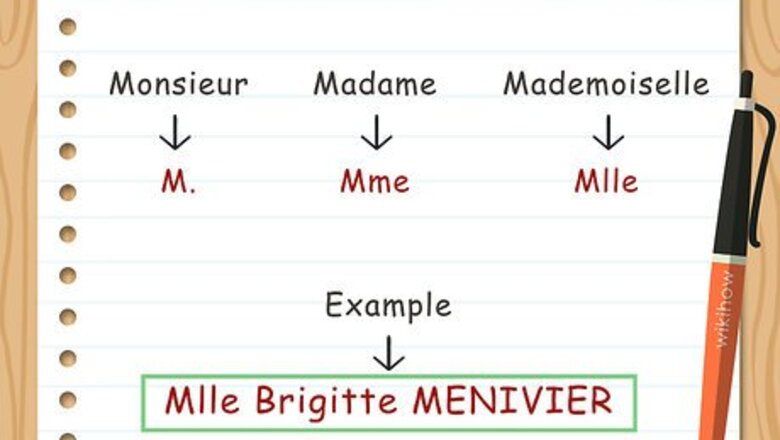
views
Addressing the Envelope

Follow French etiquette when writing the addressee’s name. Write the person's full name in the top line of text, near the middle of your envelope. Include their title; this means that you should use "Madame" for a woman and "Monsieur" for a man. "Mademoiselle" is often used for a young, unmarried woman. You can also use title abbreviations, such as "M." for "Monsieur," "Mme" for "Madame," and "Mlle" for "Mademoiselle." In France, people typically write last names all in capital letters to avoid any possible confusion. For example, you should address your letter to John SMITH instead of John Smith. For example: Mlle Brigitte MENIVIER Write the company's name on the second line, if you are writing a business letter. Exclude this step if it is a personal letter. For example: Firm France.

Put the recipient’s address on the front middle of the envelope. When writing letters to France, the recipient’s address is the only thing that should appear on the front of the envelope – and the postage, of course. Write it in the middle of the envelope, leaving at least ⁄8 in (16 mm) of blank space between the address and bottom of the envelope for the French post office’s printed bar codes. You should include the recipient’s name (line one), the street address (line two), the postal code followed by the city name (line three), and the country (line four). Be sure to capitalize all proper nouns, like street names and towns. Here is an example of how the recipient address should look: John SMITH 118 Boulevard Saint-Germain 75006 Paris France
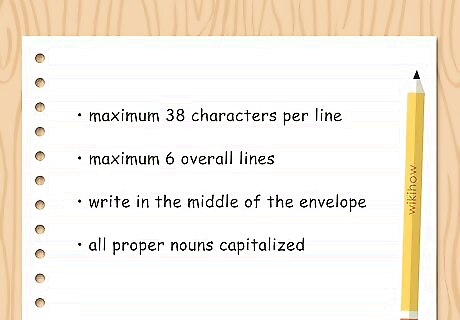
Understand additional French postal rules. When addressing a letter to France, there are a few other things to keep in mind. Each address line can contain a maximum of 38 characters, with a maximum of six overall lines allowed. Some people prefer to write the street name, city name, and country name in all caps as well, though this is not required. Do not include a comma between the house number and the street name.
Preparing the Letter for Delivery
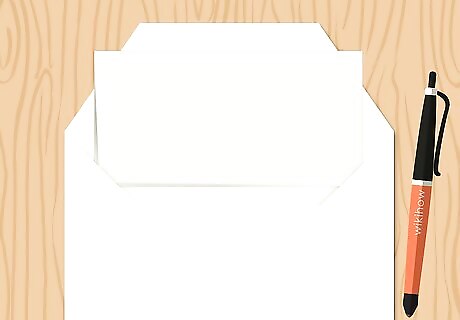
Put the letter in the envelope. Place the letter or contents inside the envelope and seal it if you have not already done so. Make sure the contents fit well inside the regular or padded envelope, as mail can sometimes be damaged in transit, especially if it is an odd shape. If you are using a padded envelope, or if your package is bumpy, address your envelope before placing the contents inside to ensure that the addresses are clear and legible.
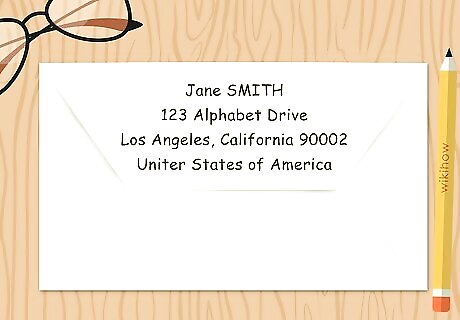
Write your address on the back. Once you have inserted the letter into the envelope and sealed it shut, you should write your name and address on the back. The French post likes to have the return address over the sealed portion of the envelope to show that it has not been opened or tampered with. You should include the following information: Your first and last name – with the last name in all caps (line one) Your street address (line two) Your city, state and postal code (line three) The country (line four)

Mail your letter to France. Take your letter to the post office and ask for help from one of the associates at the counter. They will be able to weigh the letter, and notify you of the correct postage amount. Pay for the postage and the post office employee will affix the postage stamp to your letter. Your stamp should be placed in the upper right hand corner of your envelope.
Addressing French Recipients
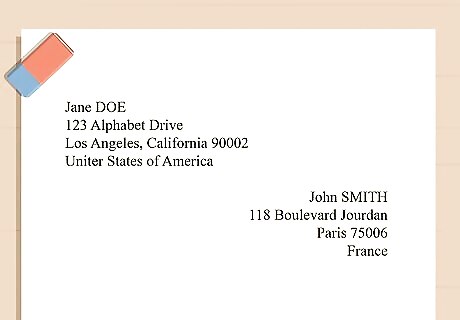
Include the proper header. For a formal letter, you’ll need to include a header with your name and address as well as the name and address of the recipient, and the date. You should align your name and address on the left, followed by one line break, then align the recipient’s name and address on the right side of the page. Include an additional line break, then the date, then begin to address the recipient. The format for both your info and that of the recipient should appear as follows: name (line one), house number and street address (line two), postal code and city name (line three), country name (line four).

Address the recipient properly. If you are writing a letter to France, unless it is to a close personal friend, you should follow the guidelines for formal letter writing. You should address the person by their official title – like Monsieur le Directeur or Madame la Directrice. The French word “cher” is the equivalent of the English “dear.” You can say “Cher Monsieur” for a man, or “Chère Madame” for a female addressee. If you are writing to more than one person, you can say “Chers Messieurs et Mesdames” – which means “Dear Sirs and Madames.” If you don’t know the name(s) of the recipients, or you are writing to a group of sorts, you may use “À qui de droit,” which is the French equivalent of “To whom it may concern.” And remember that if you are writing the letter in French, you should always use the formal “vous,” rather than the informal “tu.”
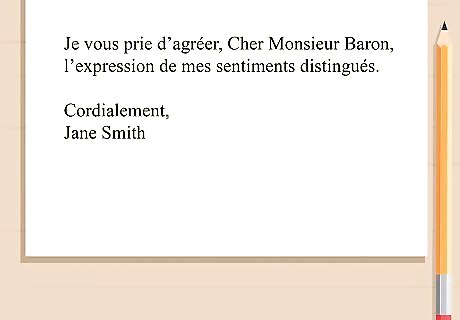
End the letter appropriately. Remember that the French are a bit more formal than some English-speaking countries, so a letter to France requires a somewhat formal closing. Be sure to choose a closing remark that fits with the situation. For a very formal or professional situation, you can write “Je vous prie d’agréer, repeat the title as you started your letter, l’expression de mes salutations distinguées.” For a slightly less formal, but still professional, situation, you can write “Cordialement” (like “Cordially”), or “Bien à vous” (“yours truly”). For a letter to friends or family members, you can write “Affectueusement” (like “Fondly”) or “Gros bisous” (like “hugs and kisses”).




















Comments
0 comment